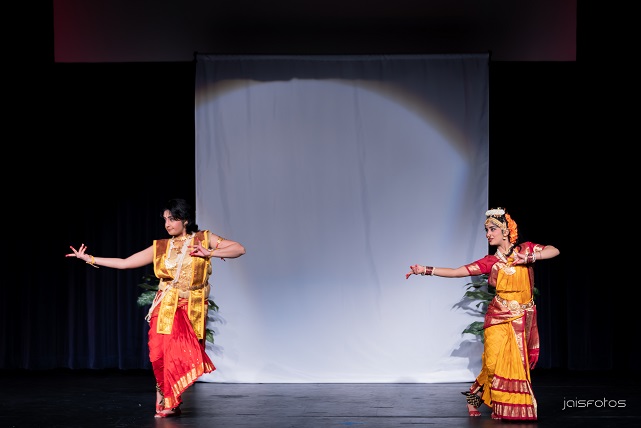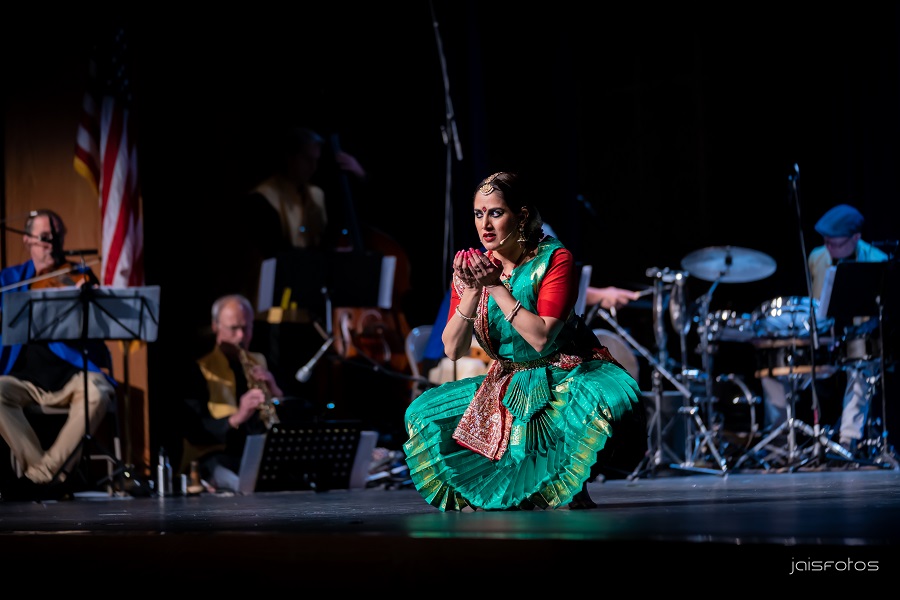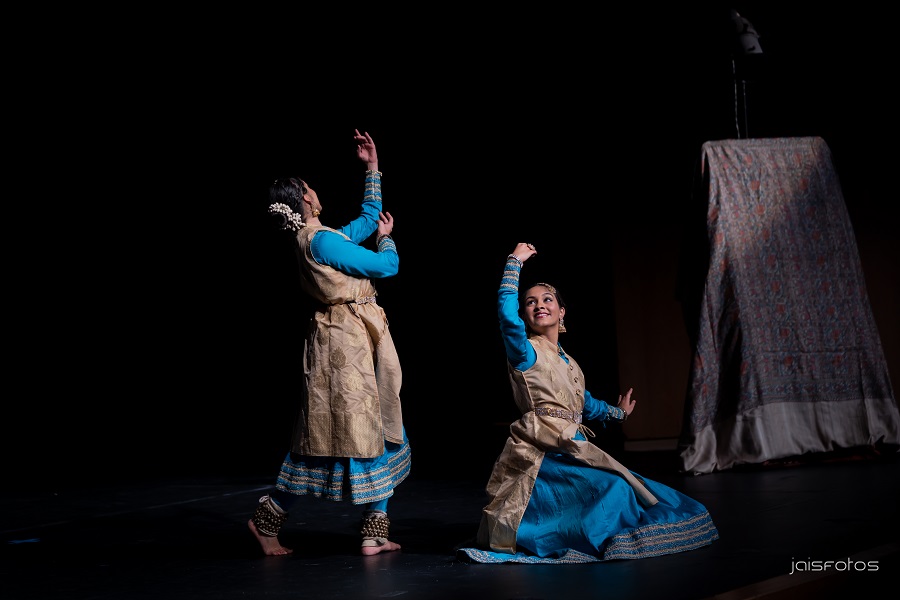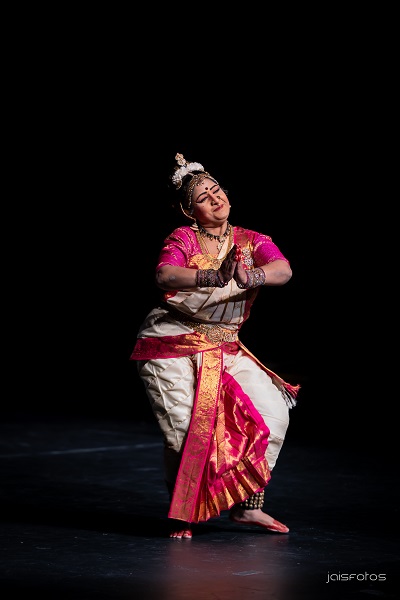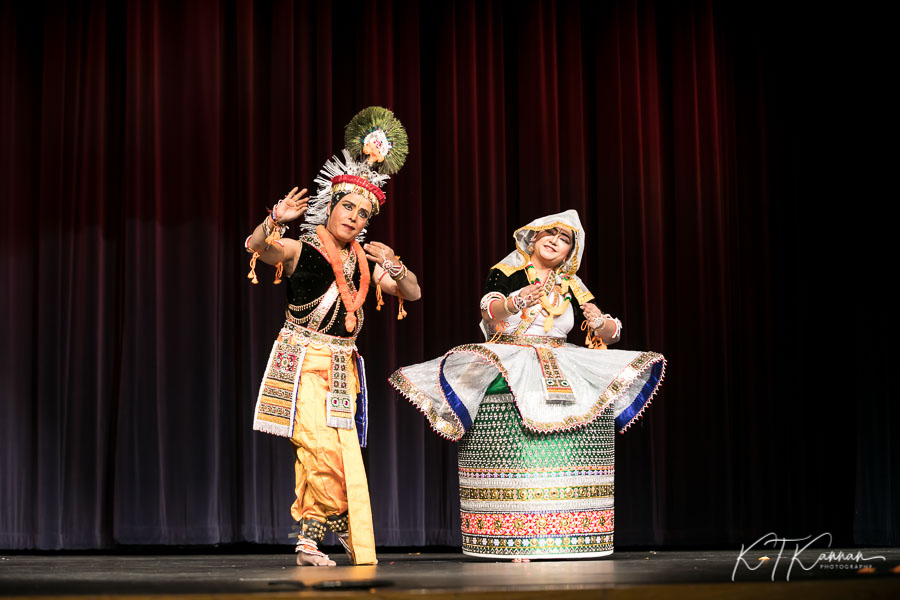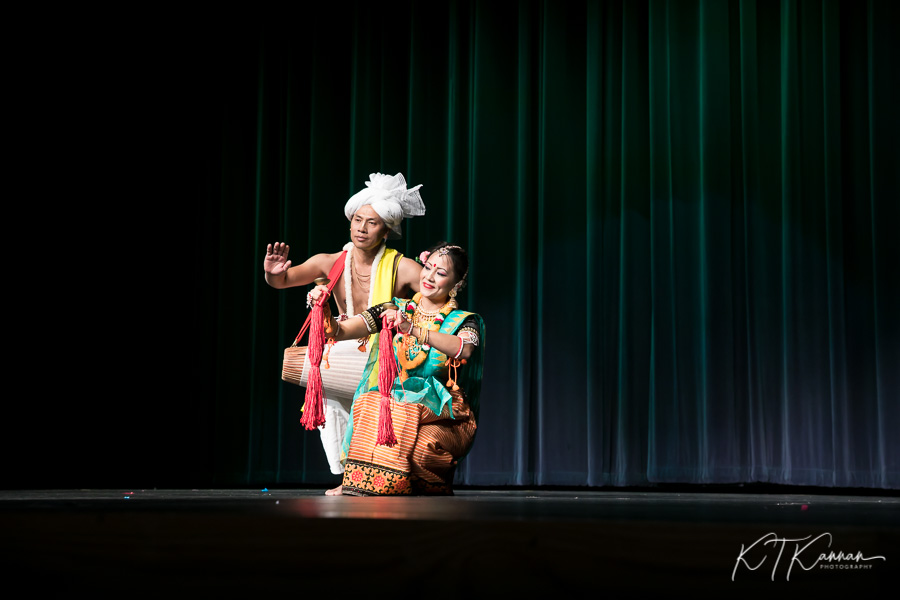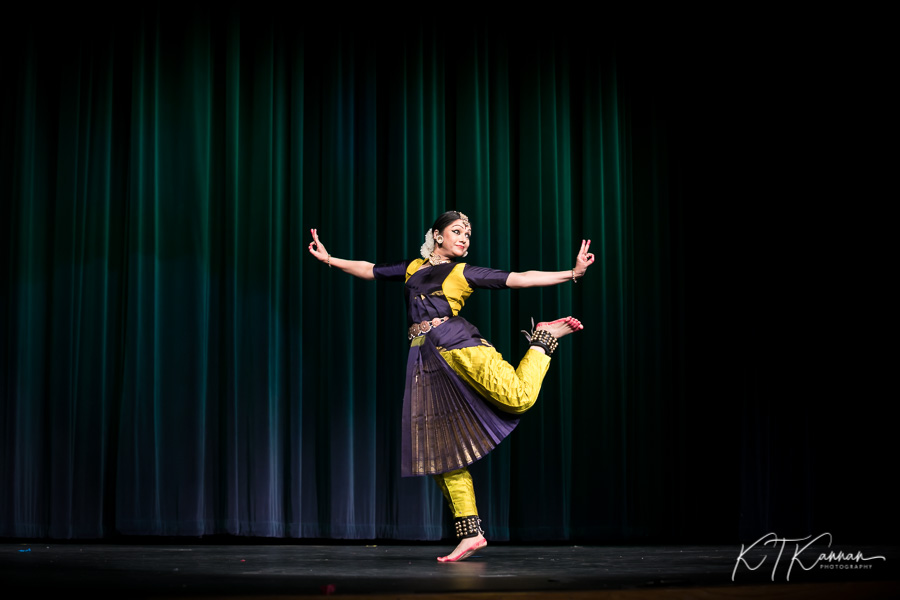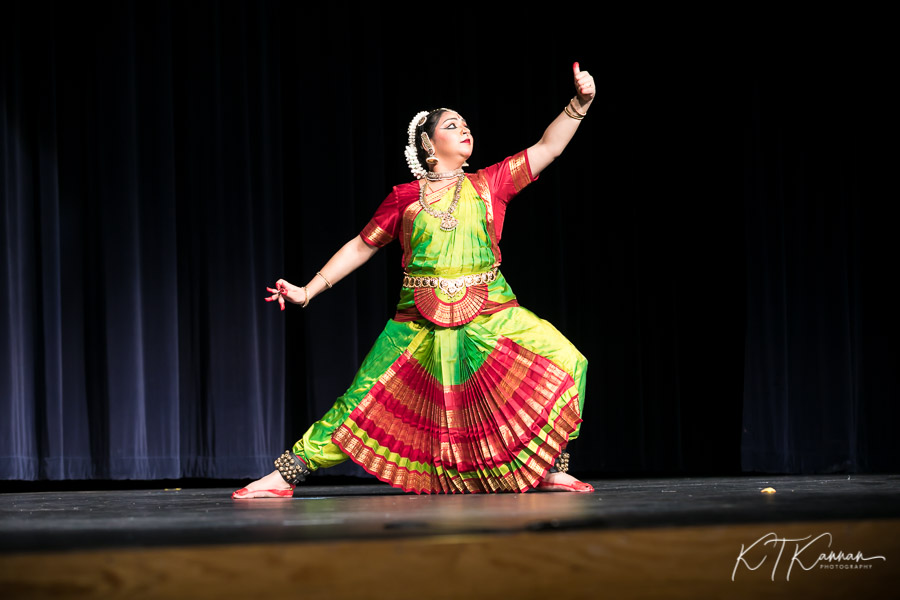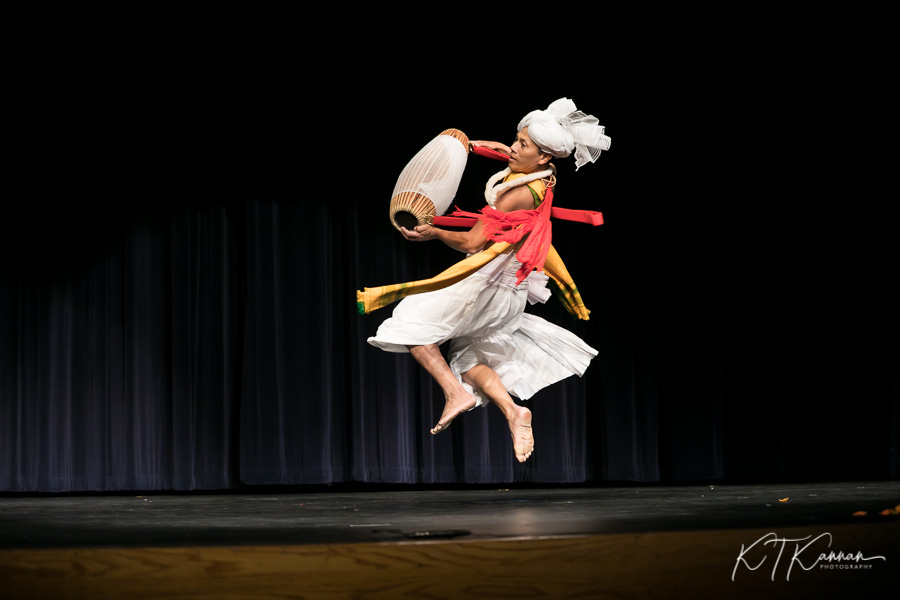Contribute
| Comments On TriNethra: A Third Eye Festival Of Dance |
Harsheni Sudakar
12/03/2019
Comments on TriNethra: A Third Eye Festival of Dance TriNethra: A Third Eye Festival of Dance had its 5th annual show from November 15th-16th. Held in the Scottish Rite Museum in Lexington each year, the show seeks to highlight theater and dance styles from all across India. The event is curated by Jayshree Bala Rajamani, a widely regarded Bharatnatyam performer and teacher in Massachusetts. The festival happens in partnership with the Monroe Center for the Arts and Lex Hills Capital and receives grants from the Massachusetts Cultural Council. The first day of TriNethra had Kathak, Kuchipudi, and Bharatnatyam with a new twist. The show kicked off on Friday with an important aspect of the festival: its young dancers series. Every year, Rajamani curates the festival to showcase new talent, inspiring young dancers by showing them what their craft could eventually look like. Personally, as a student of dance who has attended Trinethra for two years, seeing these formidable dancers has often inspired me to continue dancing and fall more in love with the craft. We don’t have to dance for 35 years to create beautiful performances (although it would probably help), so it’s heartwarming that Trinethra specifically highlights those perspectives. The first young dancers of the festival were kathak dancers Maya Bhat, a senior at Shenendehowa High School in New York, and Sessi Adepalli, a junior at Northeastern University. Their guru, Urmi Samadar founded the Aakriti dance school and performed at Trinethra last year. Kathak is a North Indian classical dance characterized by quick, rhythmic feet movements accompanied by ghungroos, or small bells, repeated spins, and eye movements. The dance originated from traveling storytellers and like most classical dances, performances typically depict stories from Indian mythology with Hindustani music. Their first performance was a teentaal, a 16 beat piece common in Kathak. Their sharp yet subtle movements added a gentle beauty to the dance. The second dance was a Gath Nikaas about monsoons. A Gath is a specific kind of walk and Gath Nikaas’s depict a certain character or idea in the way they walk. A special aspect of Kathak that isn’t true for other classical dances in India is an emphasis on improvisation. The third piece was a Shiva Tandav, a dance honoring Lord Shiva’s power and beauty. Sessi improvised the piece seamlessly, impressing the audience with both the dance’s sharp beauty and her ability to string moves together on the spot. The last performance, a Tatkaar depicting the sounds of water, wholeheartedly harnessed the dancers’ ghungroos to create an illusion of rainfall. The next set of performances was by the PADAM dance school (Prafulla’s Academy of Dance and Music). Artistic Director and Founder Prafulla Velury was accompanied by dancers Krishna Sampada Velury and Pooja Thyvalappil. The group performed Kuchipudi, a dance form originating in Andhra Pradesh with roots in the Natya Shastra. Kuchipudi pieces are mainly accompanied by Carnatic music in Telugu and are characterized by detailed feet and hand movements, abhinaya, and depictions of mythology. Krishna and Pooja kicked off the set by performing a Ganapati Pradhanam, expressing love and devotion towards Lord Ganesha. Their technical skills and dynamic supercharged their depicted emotions. Following the Pradhanam, they performed a lovely Jatiswaram in Athana Ragam and Adi Talam choreographed by Padma Bhushan Dr. Vempati Chinna Satyam. Prafulla followed their performance with “Namo Namo Maruthi,†depicting the story where Hanuman rejects a pearl necklace from Sita because it did not have Rama in it, eventually revealing that Rama lives within his heart. The sheer honesty of Hanuman’s character was well portrayed through earnest expressions and gestures. The final piece was a set of Praveshams, meant to signify certain characters entering the stage and Prafullla did a stellar job making sure their personalities imbued every aspect of the dance. The entries of Krishna and Mahishasura were self-choreographed, and the remaining, Narada, Rukmini, and Satyabhama, were choreographed by Dr.Vempati. The final act of the performance was “Ragamala Paintings Alive!†an adventurous Bharatnatyam dance piece starring Jayshree Bala Rajamani to music composed by local jazz band Natraj. Jayshree founded the Bharathakalai School of Dance in 1987 continuing the legacy of her Guru, K.J. Govindarajan. She specialized in Abhinaya with Guru Jamuna Krishnan. Bharatnatyam is a classical dance originating from the state of Tamilnadu and is characterized by aramandi, abhinaya, and mudras. The band Natraj, led by Phil Scarff, seamlessly combines Indian classical music with West African traditional music and contemporary jazz to create a fusion style with distinctive, engaging rhythms. The band is composed of tabla player Jerry Leake, drummer Bertram Lehmann, violinist and violist Rohan Gregory, and bassist Mike Rivard. “Ragamala Paintings Alive!†is a production inspired by the ancient Ragamala Paintings, which were paintings inspired by classical musical melodies, called ragas, across Northern India. The paintings depict scenes with varying themes, often with ragas, the male protagonists, and raginis, the female ones. Phil Scarff initiated the project of composing music from them and recruited Jayshree to contribute her interpretations, choreographic vision, and dancing. The composed music was stellar, adding an upbeat and engaging mood for the dances. For me, the most striking aspect of the production was the act of combining the music and dance itself. Bharatnatyam is a disciplined dance; pieces are choreographed to the background of structured beats. Jazz music, on the other hand, is the complete opposite; it’s full of improvisation and adaptation and its beauty comes from the surprise and differences from each performance to the next. This variation requires the dancer to be able to adapt mid-step and on the snap of a finger, which Jayshree did spectacularly. As a student of dance, this break from the structure and meticulous nature of the craft while still maintaining technical and expressive excellence is even more awe-striking. The performance captivated the audience with mixed media elements and included the use of images, light and shadow manipulation, and props. During the dances, the audience was able to interpret the paintings themselves from projections above the stage. I saw stories of antelopes dancing, a young Ragini preparing to get married, and kings hunting mighty beasts. Jayshree’s gestures and dance transported me right into the setting with her, whether it be a forest, lake, chariot, or palace. She depicted the youthful beauty of a Ragini waiting for her prince perfectly by playing with silhouettes behind a white sheet and using a mirror to simulate a vanity table. The production presented an adventurous combination of classical and traditional forms of music accompanied with dance. TriNethra never fails to engage an audience and I can’t wait to see the talent curated for next year. Pranathi Srirangam, Lexington High School Class of 2020 TriNethra started five years ago with the purpose of highlighting the many varying dances all over India to inspire young dancers to leave the audience feeling the same way they felt at the TriNethra festival. The second day of the festival showcased a series of more classical dance forms of Bharatanatyam and Manipuri. I myself have been to the festival for the past two years and often find that I am unable to take my eyes off the stage even momentarily. Three hours seems like a long time but once the performance starts, it goes by in the blink of an eye making you long for more at the end. As a student learning Bharatanatyam for the past eleven years, each piece I see on that stage makes me feel more and more inspired as well as connected to dance. Manasa Jayanthi started learning dance from the age of five and a half under the counseling of Smt. Jothi Raghavan and has been taught by her for over two decades. She has been teaching at the Nrityanjali Dance Company for the past fifteen years and is a true idol for the next generation of Indian American dancers. Manasa kicked off the second day of the TriNethra festival with three pieces highlighting the beauty and grace of Barathanatyam, a classical South Indian dance form. She began with a moving Pushpanjali, a dance that welcomes the lord of dance (Lord Nataraja) as well as the musicians and audience. This piece was in the Ragam Arabhi and Adi Thalam. Her second piece was a Varnam, one of the most important and complex Bharatanatyam pieces, called Rama Neeve. The Varnam praised Lord Rama, an avatar of Lord Vishnu, that was in Ragam Kharaharapriya and Adi Thalam. The music, by Tenmatam Narasimhachari, itself made me tap my feet in my seat but her expressions made me wish to run up on stage and dance with her. The interesting thing about this piece is that she in fact used of her guru’s guru’s, Rajaratinam Pillai. Manasa’s final piece was a Javali, a piece often about an unfaithful hero or heroine with romantic themes, called Nee Maatale Mayanura. This piece was in Ragam Poorvikalyani, Caapu Thalam and was sung by Pattabhi Ramayya. In this piece, Manasa very accurately displayed expressions of anger at her lover as well as a sense of longing at the sound of his voice. The second group performed Manipuri, a North Indian dance based in Manipur, consisting of Jagannath Lairenjam (a senior in Manipuri drum dancer who learned in Manipur from Shri Ng. Biramangal Singh) Sanjib Bhattacharya (well known internationally who has received President’s Awards from Abdul Kalam and Pratibha Patil), Dr. Krishnakali Dasgupta (senior student of Smt Poushali Chatterjee of Kolkata and Dr. Sohini Ray of Los Angeles), and Jolly Lairenjam (learning Manipuri since childhood and performed in festivals in Bangladesh growing up, she continues to learn under Sanjib Bhattacharya’s guidance). The Manipuri dance troupe performed many extensive pieces ranging from dance dramas, called Rasleela, to community prayer like celebrating Holi or Rathayatra, called Sankeertan to beautiful mixes of drum playing and dancing. The Manipuri dancers were so graceful that one could merely not take their eyes off of them while they gracefully performed on stage, calming the audience. The final performance was done by Kalaimamani Rama Vaidyanathanan, a renowned Barathanatyam dancer who is well known all over India. Her dance career was decided long before she was born when after being star struck from one of Yamini’s performances, her pregnant mother had decided that if her child was a girl, her daughter would learn Bharatanatyam from Yamini. And with that Rama in fact did go on to learn from the legendary Yamini Krishnamurthy and the well known Guru Saroja Vaidyanathanan. Her first piece was a Mayur Alarippu and her graceful imitation of a peacock was so accurate that even without knowing anything about dance, one could instantly point out she was showing the beauty of a peacock. Her second piece was in Raagamalika, a piece composed of various ragas flowing from one to the next, called Jeevathashavasta. Taking the teachings of Guru Nankji, one of the Guru’s from the Sikh religion, the 10 stages of yearning in the lifetime of a human, and described how an embryo, sick of the selfish stages of life ranging from yearning for attention to wanting to escape the grasp of death, refuses to be brought back into the selfish world again. This unique performance is something not often associated with Baharathanatyam, which normally portrays more religious values, and the unexpected twist left everyone starstruck the same way her mother was seeing Yamini all those years ago. Rama’s final piece was called Ras Leela. Her unique dancing, vivid expressions, and strong dance form all bring a modern twist to this classical dance style leaving the audience in shock each and every time she takes to the stage. As a student of dance, I have been to numerous performances, but never have I seen a single production showcasing numerous different dance forms. In general, most productions tend to display the highlights of their specific dance forms, but TriNethra makes sure to highlight the different dance forms from North India and South India, classical and nonclassical. This uniqueness of TriNethra prompts everyone to come back to watch every year and each show gives the audience a glimpse of the Indian Dance World continuing to leave the young dancers out there inspired and the entire audience in awe again and again.
You may also access this article through our web-site http://www.lokvani.com/
